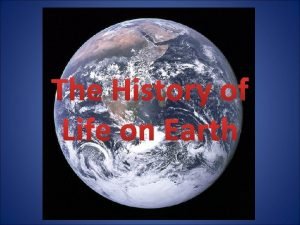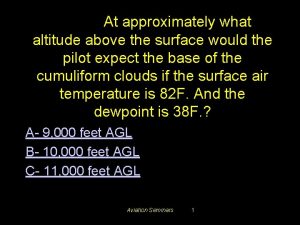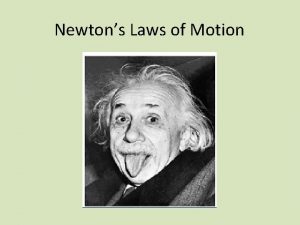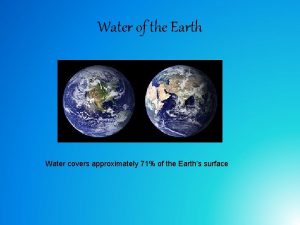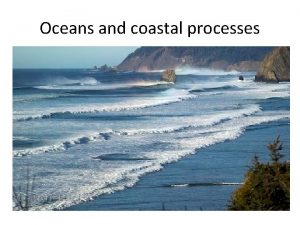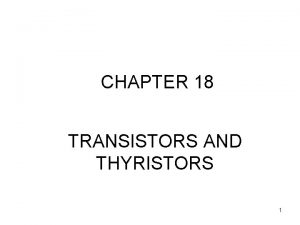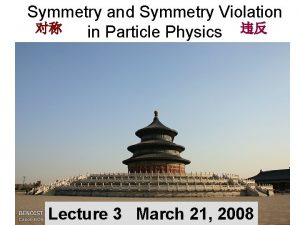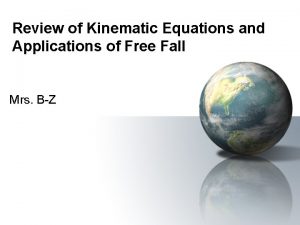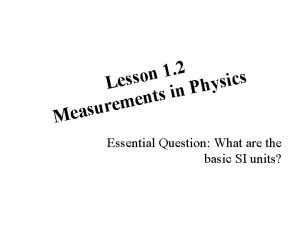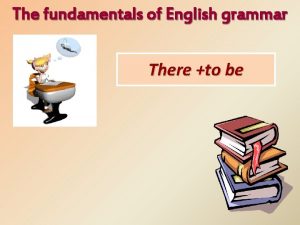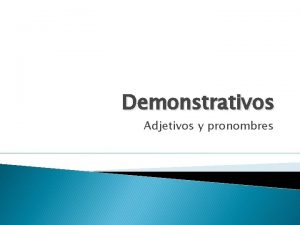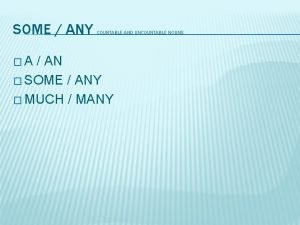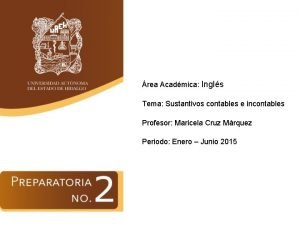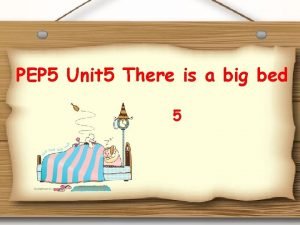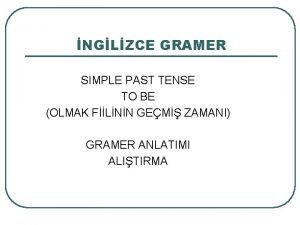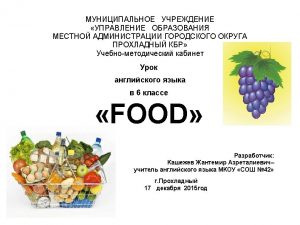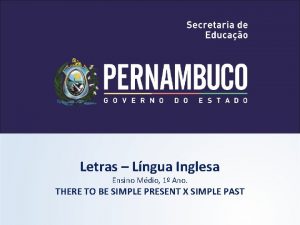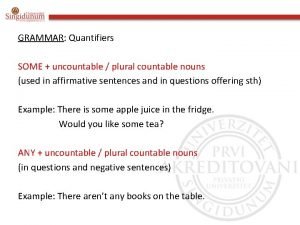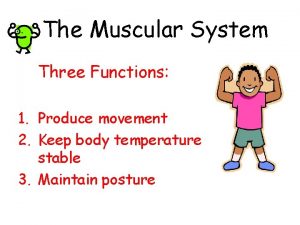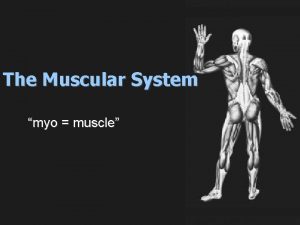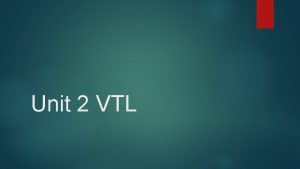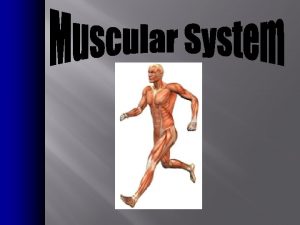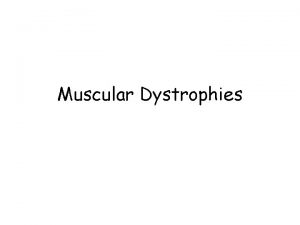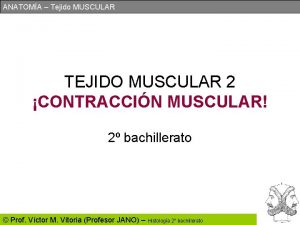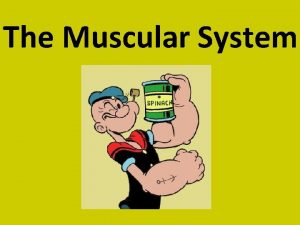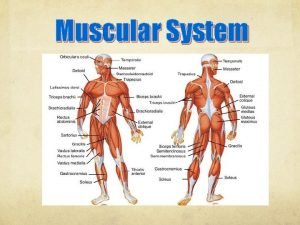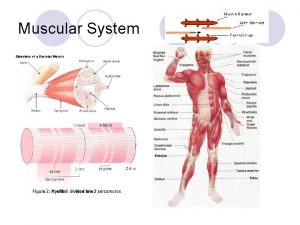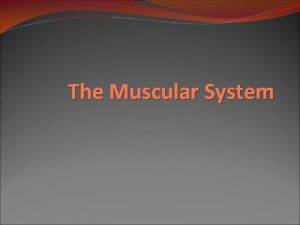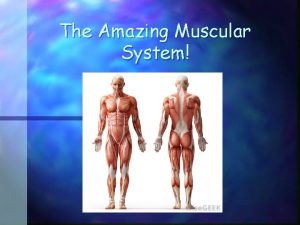The Muscular System The Muscular System There approximately






























- Slides: 30

The Muscular System

The Muscular System �There approximately 600 muscles in the human body �Muscles are composed of muscular tissue, which is constructed of bundles of muscle fibers about the size of a human hair �The larger the muscles , the greater the fibers �Muscles perform their duties by alternating contractions and relaxing �All muscle activity is influenced by the nervous system

The Muscular System �The group of cells and its motor neurons are called motor units �A muscle contraction is a quick progression of events following a stimulus �When repeated stimulation occurs without a relaxation time, the muscle is maintained in a state of contraction called tetanus �This happens when we experience muscle cramps and spasms

Muscle Fuel �All body tissues must have food and oxygen to survive �The muscle receive an ample supply of both because of their importance to the body’s safety and well-being �The body stores carbohydrates in it’s muscles in the form of starch called glycogen �When muscles function, they use the stored glycogen, changing it to glucose, as their source of energy �Heat is released as this fuel is used, thereby warming the body �Exercise burns glycogen

Functions Of Muscles �In addition to providing heat and the ability to move, muscles support the structures of the body and hold the body upright �The muscles along the back, shoulders, and neck hold the trunk and head erect while permitting great flexibility in movement �Muscles also provide protective padding to shield delicate internal organs and structure form injury �Muscles gives shape to the body

Muscle Growth �Muscle tissue changes slightly with age �Muscles grow in relation to the structures to which they are attached, for example, muscles of the eye grow very little, whereas the large muscles of the lower extremities grow considerably

Types Of Muscle Tissue �There are three types of muscle tissues �They specialized to contract and bring about movement �Skeletal muscle tissue �Smooth muscle tissue �Cardiac muscle tissue

Skeletal muscle tissue �Skeletal, striated(striped) and voluntary(next slide) �Attached to bones, moves the skeleton, produces heat �Essential to cause contraction �These muscles are supplied with motor nerves for simple motions like extending the arm or breathing, to do the highly coordinated movements like walking, swimming, or skiing

1�Three names for this Skeletal(striated) tissue: �Skeletal- describes its location �Striated(striped)- describes its appearance �Voluntary or involuntary - describes how it functions �Specialized to contract and bring about movement

2 Smooth Muscle Tissue �Nonstraited, smooth, involuntary �Found in walls of hollow organs such as blood vessels, intestines, and uterus �Helps with peristalsis(to propel food through the digestive tract)

3 Cardiac Muscle Tissue �Have faint striations, involuntary �Pumps blood �Composes the walls of the heart �Regulate only the rate of contraction

Skeletal Muscle Action �When muscle contract, they become shorter and thicker �Example: when the biceps contract to bend at the elbow, the shorter and thicker muscle become, this causes a bulge in the upper arm

Skeletal Muscle Action �The skeletal muscle that bends a joint is called a flexor muscle �Whereas the action of straitening the joint is done by the extensor muscle �The extensor muscle that straightens the elbow is the triceps

Skeletal Muscle Action �Muscle also contract to move extremities away from the body’s center line, which is known as abduction, or toward the center line, which is known as adduction

Muscle Tone � Loss of muscle tone can occur when muscles are not used, as with severe illness, elderly people, paralysis, or temporarily when an extremity has been immobilized in a cast � With prolonged lack of use, muscles will atrophy(wasting away of a part of the body) � Another condition that develops from lack of muscle use is called contracture, where the muscle become paralyzed(fingers, elbows, knee’s, and hip joints)

Muscle Attachment �A tendon is known as a strong fibrous structure, are attached to rough surfaces on a bone and are extremely strong and do not stretch �The thickest and strongest tendon in the human body is the Achilles tendon, which attaches the gastrocnemius muscle in the calf of the leg to the heel bone �Attached muscle to bone

Muscle Attachment �A similar type of connective tissue is called a ligament �A ligament is flexible and support organs and connect bone to bone �Remember: a tendon connects muscle to bone and a ligament connects bone to bone

Major Skeletal Muscles �The muscle most important in breathing divides the chest cavity from the abdominal cavity, this muscle is called the diaphragm �The sternocleidomastoid and the trapezius are the major muscles of the neck and the upper back that hold the head erect and assist with its movements

Major Skeletal Muscles �The pectoralis major is the main upper chest muscle, this enables us to flex the arm across the chest �The intercostal muscles lie beneath the pectoralis major, between the ribs, these enlarge the diaphragm during inspiration

Major Skeletal Muscles �The back is covered by a large muscle called the latissimus dorsi, its main function is to extend adduct the arm(as with swimming) �The shoulders are protected by a triangle muscle called the deltoid, which abducts the arm �The deltoid is used for small injections of medications, intramuscularly delt oid

Major Skeletal Muscles(lower extremity) �The lower extremities muscles involve half of the body’s total muscle mass �The buttock are formed by the large gluteus maximus muscles, which support the body’s weight and enable use to stand erect �The upper outer quadrant(ventral gluteal) of the buttock is the site for intramuscular injections, especially for large amounts of a slowly absorbing medication

Major Skeletal Muscles(lower extremity) �The front of the thigh has the longest muscle of the body, the Sartorius, this flexes the hip and knee joints to turn the thigh outward, making it possible to sit cross-legged on the floor

Major Skeletal Muscles(lower extremity) �The quadriceps femoris, with four separate parts: �Rectus femoris(vastus intermedius) �Vastus lateralis(nest slide) �Vastus medicalis �Sartorius(last slide) �It is a powerful extensor of the knee and is used when we rise from a sitting position, kick a ball, or swim

Vastus Lateralis �The Vastus lateralis is the largest part of the quadriceps femoris �This is an IM injection site, and is the standard for infants and young children because it is the safest and largest muscle for children

Major Skeletal Muscles(lower extremity) �The gastrocnemius is the main muscle in the calf of the leg, this permits you to stand tiptoe � It runs from its two heads just above the knee to the heel, and is involved in standing, walking, running and jumping.

Muscles Of Expression �A number of muscles in the face enable us to show our feelings �The frontalis(frontal) muscles can raise to express surprised �The obicularis oris allows us to whistle, kiss, smile, grin

Muscle Strain And Cramps �A strain is an injury to a muscle or tendon in which the muscle fibers tear as a result of overstretching �Muscle cramps are unpleasant, often painful, caused by muscle contraction or over shortening, it can usually be relived by stretching the muscle or causing it to bear weight

Disease And Disorders �Tendonitis: This is a painful inflammation of the tendon �Epicondylitis(also called tennis elbow): This is inflammation of a forearm tendon at the attachment on the humerus at the elbow �Fibromyalgia Syndrome: This is a chronic musculoskeletal condition characterized by widespread pain, it affects people of all ages

Disease And Disorders �Muscular Dystrophy: This is a group of congenital disorder results in progressive wasting away of skeletal muscle �There are several types of muscular dystrophy)listed on page 419)

Disease And Disorders �Torticollis: This neck deformity bends the head to the affected side and rotates the chin toward the opposite side �This caused by shorting or spasm of the strenocleidomastiod neck muscle
 Plyometrics disadvantages
Plyometrics disadvantages Less complicated texture than baroque (more homophonic)
Less complicated texture than baroque (more homophonic) The earth formed approximately
The earth formed approximately The jfet always operates with
The jfet always operates with At approximately what altitude above the surface
At approximately what altitude above the surface Mac and tosh are arguing in the cafeteria
Mac and tosh are arguing in the cafeteria Water covers approximately
Water covers approximately Oceans cover approximately
Oceans cover approximately Q point
Q point A charm quark has a charge of approximately
A charm quark has a charge of approximately Which is approximately equal to sin a
Which is approximately equal to sin a Luke autbeloe drops a pile of roof shingles
Luke autbeloe drops a pile of roof shingles A human hair is approximately 50 μm in diameter
A human hair is approximately 50 μm in diameter Tema there is there are
Tema there is there are What part of speech is open
What part of speech is open There is there are negative form
There is there are negative form There is ve there are
There is ve there are There are some pasta
There are some pasta There is there are
There is there are The man with all the birds live/lives on my street
The man with all the birds live/lives on my street Demonstrativos
Demonstrativos Some, any, much, many
Some, any, much, many Sustantivos en ingles contables
Sustantivos en ingles contables Pep unit
Pep unit Ingilizce gramer zamanlar tablosu
Ingilizce gramer zamanlar tablosu Let's practice the game
Let's practice the game There is there are
There is there are Hay there is there are
Hay there is there are Sightseeing countable or uncountable
Sightseeing countable or uncountable If there is no struggle there is no progress examples
If there is no struggle there is no progress examples What do muscles move
What do muscles move


